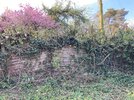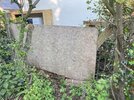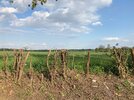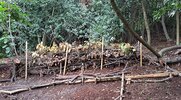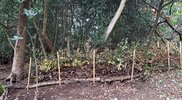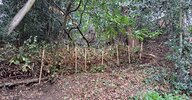- Joined
- 7 Mar 2004
- Messages
- 278
- Reaction score
- 4
- Country

Hi,
My property has a 30m+ long hawthorn hedge running alongside a road. It's in a conservation area so I'm probably expected to renovate the hedge using native species but prioritising on hawthorn (no laurel allowed). The hedge is in terrible condition as large trees and shrubs have been allowed to grow at various points and the hedge itself is riddled with ivy. There are also a number of fence panels, including reed, hit and miss, etc. It's a really untidy mess and I just can't decide what to do with it. Ideally, I'd just have a thick hedge which was good for security (so lots of thorns) but also provided privacy - hawthorn isn't the best as it drops its leaves in the winter.
I've looked online and I've come to the conclusion that the main reason the hawthorn is in such poor condition is because it's starved of light - the trees and shrubs are bad enough in terms of blocking light but the ivy has completely overwhelmed it and the fence panels only make it worse as they don't let any sunlight through at all.
My strategy is to remove all of the ivy, etc., remove/prune all of the trees and shrubs and cut back all of the hawthorn to just 7' high - it's much higher than that at the moment. I think I'll have to bite the bullet and remove all of the old fencing as well and I'll run some screening tarpaulin (not fully opaque) on the inside of the hedge for privacy until the hedge has grown a bit thicker. In the meantime, I'll add in additional hawthorn whips to fill in the gaps and I might look at adding some blackthorn, holly and firethorn as well to provide a bit more privacy in winter.
Any opinions, ideas or comments are very welcome
My property has a 30m+ long hawthorn hedge running alongside a road. It's in a conservation area so I'm probably expected to renovate the hedge using native species but prioritising on hawthorn (no laurel allowed). The hedge is in terrible condition as large trees and shrubs have been allowed to grow at various points and the hedge itself is riddled with ivy. There are also a number of fence panels, including reed, hit and miss, etc. It's a really untidy mess and I just can't decide what to do with it. Ideally, I'd just have a thick hedge which was good for security (so lots of thorns) but also provided privacy - hawthorn isn't the best as it drops its leaves in the winter.
I've looked online and I've come to the conclusion that the main reason the hawthorn is in such poor condition is because it's starved of light - the trees and shrubs are bad enough in terms of blocking light but the ivy has completely overwhelmed it and the fence panels only make it worse as they don't let any sunlight through at all.
My strategy is to remove all of the ivy, etc., remove/prune all of the trees and shrubs and cut back all of the hawthorn to just 7' high - it's much higher than that at the moment. I think I'll have to bite the bullet and remove all of the old fencing as well and I'll run some screening tarpaulin (not fully opaque) on the inside of the hedge for privacy until the hedge has grown a bit thicker. In the meantime, I'll add in additional hawthorn whips to fill in the gaps and I might look at adding some blackthorn, holly and firethorn as well to provide a bit more privacy in winter.
Any opinions, ideas or comments are very welcome

